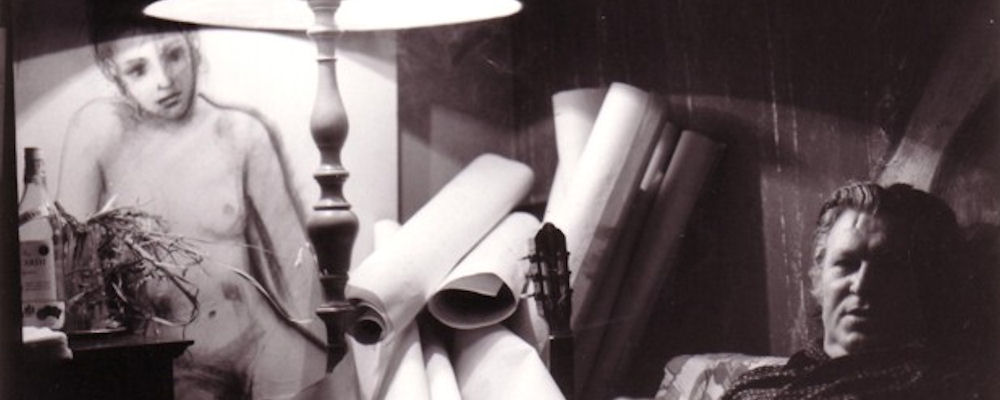
Walter Madoi, Alla Torre, Milan, Italy,1972
BIOGRAPHY
1925 – 1960 The years of consciousness
His first work, dated 1937, when he was only 12, is a still life reproducing few poor things probably found in the family house, in the deep country
of the low lands near the Po river. The middle son, between two brothers, even in the desolation of a farmer family, he received all the possible
attention as a reward to something incomprehensible and precious. He attended a School of Arts in Parma but was forced to leave during the war, when
he joined a group of Partisans fighting in the mountains for freedom and for human ideals. At the end of the war he was commissioned to paint the
ceiling of the Municipal House – Mayor Cabinet – in Parma. He was 22, in
December 1947, when he received the honours by the first President
of the newly born Republic of Italy, Hon De Nicola. He went then to Milan where, even if he accepted the role of Art Director in a great industrial Company,
he never ceased to paint and tackled, possibly for the first time, the secrets of sculpture, leaving several works in marble of great dimensions.
1960 – 1970 The East and the wide walls
Still in Milan, in 1961 through 1962,
he accepted the invitation of the Consulates of China and Japan for a living-in seminar
of art. The many works in the hands of local private collectors are unfortunately untraceable. He also acted as correspondent for
the Gazzetta di Parma, sending monthly reports describing the life and costumes of Countries so far away, in those times. These
long articles, as a personal diary, were accompanied by dozens of drawings sent in original, and were published till his return.
In 1964 he started the Sesta adventure. In few words he monopolized an entire mountain village near Parma, painting frescoes on the outside
of the houses and all over the inside of the little Church, making this long lost place a center of art visited by celebrities.
After that, his only failure was the denial by the East Germany Authorities to paint the East side of the Berlin Wall. Having
secured the approval of the West Authorities he hoped to make his dream possible, and while waiting he drafted hundreds of projects,
till the very last moment. At the end of ’60s he accepted two other big commissions, which he completed in few months.
The abse of Corpus Domini, a plain Church in the suburbs of Parma, with her 400 square meters of wall, hosts a great fresco with
hundreds of figures spiralling towards a sublime Last Supper. Soon afterwards, in 1969, he completed the front wall of another
Church La Sacra Famiglia a Le Vallette, in Turin, 300 square meters of painted stained glass.
1970 – 1976 The Tower as ultimate refuge
In the early ‘70 Milan was still living the dark side of political and social conflicts which would have ended some years later. Madoi was there,
watching the movement from the battlements of the Tower , an historical palace in the centre of the city given him by the Town Council of Milan as an
homage to his art. Inside these ancient walls he created his most intense works in those years which would have been the last of his life. Acting like
a prisoner of his art, he was never leaving the Tower, working furiously all nights through, hosting at various intervals models, poor chaps called up
from the streets and setting up verbal confrontations with the most famous representatives of the industrial, theatre, music and show world, all human
kinds mixed together as precious material to work on.
At the end of 1974, though very ill, he completed an huge monument, sized 12 meters and fused in bronze, which is now in the Municipal square in San
Donato, Milan. Another monument for the city of Genoa remained an unfinished project and the scale model and preparatory drawings were recovered and
recently presented in Recto Verso, an event held in Parma, at the Civic Museum. In December 1975, as a very last effort, he painted in fresco the abse
of a little Church, in a no-place near Cremona. In this painting there are all the colours of his life, shadow and light fighting together with a
winning bright red, with a sort of mistery as the theme of this ultimate will.
He died in Milan, in March 1976, famous for the hundreds of private
collectors who have been given the privilege of owing one or more of his works, often as presents, and totally unknown to the art dealers and critics
whom he despised and ignored all his life long. He left a considerable collection in the hands of his daughters, Annamaria and Laura, who are now
devoted to honour his life and his art.



















